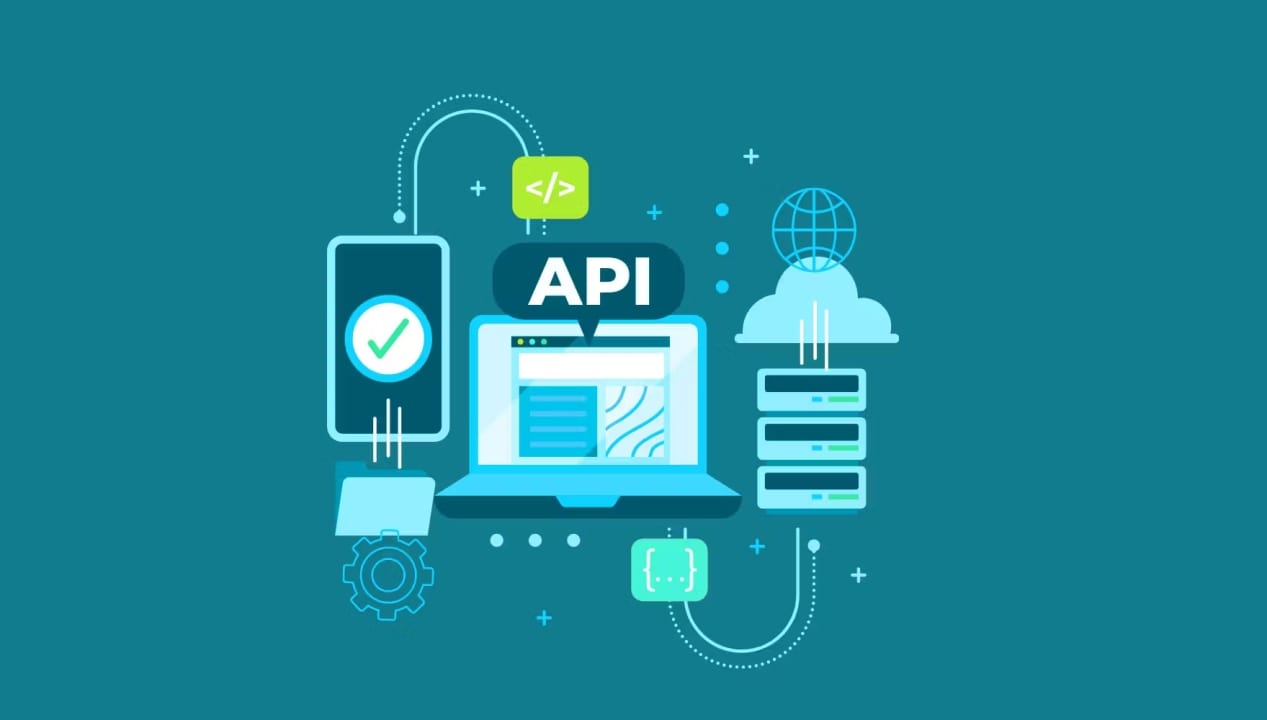REST API Pentesting Services
API Security Company
REST API Security is essential for protecting the integrity and confidentiality of data exchanged between clients and servers. It involves implementing robust authentication and authorization mechanisms, validating and sanitizing inputs, and ensuring secure data transmission through encryption. Regular vulnerability assessments and penetration testing, like those offered by Valency Networks, help identify and mitigate potential security risks, safeguarding your REST APIs against attacks and ensuring compliance with industry standards.
Phase-Wise REST API VAPT Approach
To ensure comprehensive security for REST APIs, a phase-wise approach to Vulnerability Assessment and Penetration Testing (VAPT) is essential. This structured methodology helps systematically identify, analyze, and mitigate potential vulnerabilities. Below is a detailed look at the various phases involved in REST API VAPT.
Phase 1: Planning and Scoping
The first step is establishing the groundwork for the VAPT process. Clearly outline the goals of the testing, whether it’s identifying vulnerabilities, assessing compliance, or improving overall security posture.

Define the scope by identifying which API endpoints, functionalities, and data flows will be tested, including databases, authentication mechanisms, and third-party integrations. Assign roles and responsibilities to the testing team, ensuring the availability of necessary tools and environments. Obtain necessary permissions and ensure all activities comply with legal and regulatory requirements.
Phase 2: Information Gathering
The next phase involves collecting detailed information about the API to understand its structure and functionalities. Analyze API documentation to understand endpoints, methods, parameters, and data formats. Use tools like Burp Suite, Postman, and Nmap to discover all available API endpoints and functionalities. Identify different user roles and their corresponding access levels to understand potential attack vectors related to authorization.
Phase 3: Vulnerability Identification
In this phase, the focus is on identifying potential vulnerabilities using automated tools and manual techniques. Employ tools like OWASP ZAP, Burp Suite, and Nikto to perform initial scans and identify common vulnerabilities such as SQL injection, XSS, and CSRF. Conduct manual testing to identify complex vulnerabilities that automated tools might miss, such as business logic flaws and chained exploits. Pay special attention to API-specific issues like improper rate limiting, lack of input validation, and insufficient logging and monitoring.
Phase 4: Exploitation
Here, the goal is to verify the presence of vulnerabilities by attempting to exploit them. Perform controlled exploits to demonstrate the impact of identified vulnerabilities, ensuring these exploits do not disrupt the live environment. Test for the possibility of elevating user privileges or accessing unauthorized data through vulnerabilities. Attempt various injection attacks (e.g., SQL, XML, JSON) to assess the API’s input validation mechanisms.
Phase 5: Post-Exploitation Analysis
After exploitation, analyze the results to understand the impact and potential damage. Evaluate the potential for data theft or leakage through identified vulnerabilities. Assess the potential for compromising system integrity and gaining unauthorized control over API functionalities. Determine the potential business impact of exploited vulnerabilities, considering factors such as data sensitivity, regulatory compliance, and user trust.
Phase 6: Reporting
Documenting the findings and providing actionable recommendations is crucial. Prepare a comprehensive report detailing the identified vulnerabilities, methods used for exploitation, and the potential impact. Include technical details and screenshots where applicable. Categorize vulnerabilities based on their severity and potential impact on the business. Provide clear and actionable steps for addressing each identified vulnerability, prioritizing recommendations based on the risk assessment.
Phase 7: Remediation and Retesting
Ensure that identified vulnerabilities are effectively addressed and verified. Work with the development team to implement the recommended fixes for each vulnerability. Conduct follow-up tests to verify that the vulnerabilities have been properly mitigated and no new issues have been introduced. Update security policies and procedures based on the findings and lessons learned during the VAPT process.
Phase 8: Continuous Monitoring and Maintenance
Maintaining ongoing security vigilance is essential to protect the API from emerging threats. Implement continuous monitoring tools to detect and alert on suspicious activities and potential threats. Schedule regular VAPT engagements to identify and address new vulnerabilities. Keep all components up to date with the latest security patches. Provide ongoing security training for development and operations teams to ensure adherence to best practices and awareness of evolving threats.
A phase-wise REST API VAPT approach ensures a thorough and systematic assessment of API security. By meticulously planning, identifying, exploiting, and remediating vulnerabilities, organizations can significantly enhance their API security posture. Regular retesting and continuous monitoring further ensure that APIs remain secure in the face of evolving cyber threats. Investing in such a comprehensive VAPT process is crucial for safeguarding sensitive data, maintaining user trust, and ensuring compliance with regulatory standards.
Typical Vulnerabilities Found in REST API VAPT
During Vulnerability Assessment and Penetration Testing (VAPT) of REST APIs, several common vulnerabilities are frequently identified. These vulnerabilities can pose significant risks to the security and integrity of the API and the data it handles. Below are some of the typical vulnerabilities found in REST API VAPT:1. Injection Attacks
Injection attacks, such as SQL injection, XML injection, and command injection, are prevalent in REST APIs. Attackers exploit insufficient input validation mechanisms to inject malicious code into API requests, leading to unauthorized access to data or system compromise.2. Broken Authentication
Weaknesses in authentication mechanisms can allow attackers to bypass authentication controls and gain unauthorized access to API resources. Common issues include weak password policies, lack of multi-factor authentication (MFA), and improper session management.3. Insecure Direct Object References (IDOR)
Insecure Direct Object References occur when APIs expose internal implementation details, such as database keys or file paths, in API responses. Attackers can manipulate these references to access unauthorized data or perform actions on behalf of other users.4. Lack of Proper Authorization
Failure to enforce proper authorization controls can result in unauthorized access to sensitive data or functionalities. APIs should implement fine-grained access controls to ensure that users can only access resources they are authorized to.5. Insufficient Input Validation
Inadequate validation of input data can lead to various security vulnerabilities, including injection attacks and data manipulation. APIs should validate and sanitize all input parameters to prevent attackers from exploiting vulnerabilities.6. Security Misconfigurations
Misconfigurations in API servers, frameworks, or cloud services can expose APIs to security risks. Examples include exposed debug endpoints, unnecessary HTTP methods, and improper error handling. Proper configuration management is essential to mitigate these risks.7. Lack of Transport Layer Security (TLS)
Failure to encrypt data transmitted over the network leaves APIs vulnerable to interception and tampering. APIs should enforce the use of TLS to encrypt data in transit and protect against eavesdropping and man-in-the-middle attacks.8. Inadequate Logging and Monitoring
Insufficient logging and monitoring capabilities make it difficult to detect and respond to security incidents effectively. APIs should implement comprehensive logging mechanisms to record all relevant events and anomalies. Continuous monitoring helps identify suspicious activities and potential security breaches.9. Excessive Data Exposure
Exposing sensitive data in API responses without proper authorization checks can lead to data exposure and privacy violations. APIs should only return the necessary data and adhere to the principle of least privilege to minimize the risk of data exposure.10. Lack of Rate Limiting and Throttling
Without proper rate limiting and throttling mechanisms, APIs are vulnerable to abuse, such as Denial of Service (DoS) attacks and brute force attacks. Implementing rate limiting helps protect API servers from excessive traffic and ensures fair usage for all users. Addressing these typical vulnerabilities is essential to enhance the security posture of REST APIs. Through thorough Vulnerability Assessment and Penetration Testing (VAPT), organizations can identify and remediate these vulnerabilities before they can be exploited by attackers. By implementing robust security controls and best practices, organizations can protect their APIs and the sensitive data they handle from potential security breaches and unauthorized access.REST API VAPT Process
The Vulnerability Assessment and Penetration Testing (VAPT) process for REST APIs involves a systematic approach to identifying, analyzing, and mitigating security vulnerabilities. This process ensures that APIs are thoroughly tested for weaknesses and that appropriate measures are taken to address any identified issues. Below is an overview of the typical steps involved in the REST API VAPT process:
1. Planning and Preparation

Define Objectives:
Clearly outline the goals and objectives of the VAPT engagement. Determine the scope, including the API endpoints, functionalities, and data flows to be tested.Resource Allocation:
Allocate the necessary resources, including tools, personnel, and environments, for conducting the VAPT.Legal and Compliance Considerations:
Ensure that all testing activities comply with legal and regulatory requirements. Obtain necessary permissions and approvals.
2. Information Gathering
API Documentation Review:
Analyze the API documentation to understand the endpoints, methods, parameters, and data formats.API Enumeration:
Use tools and techniques to discover all available API endpoints and functionalities.Authentication Mechanisms:
Identify the authentication mechanisms used by the API and understand how they work.
3. Vulnerability Identification
Automated Scanning:
Employ automated scanning tools to identify common vulnerabilities such as injection flaws, broken authentication, and insecure direct object references.Manual Testing:
Conduct manual testing to identify complex vulnerabilities that automated tools may miss, such as business logic flaws and authorization bypasses.API-Specific Vulnerabilities:
Focus on vulnerabilities specific to REST APIs, such as insufficient input validation, improper error handling, and inadequate access controls.
4. Exploitation
Proof of Concept:
Attempt to exploit identified vulnerabilities to verify their presence and impact. This may involve simulating attacks to demonstrate the potential consequences of the vulnerabilities.Privilege Escalation:
Test for the ability to escalate privileges or access unauthorized data through the identified vulnerabilities.Injection Attacks:
Attempt various injection attacks (e.g., SQL injection, XML injection) to assess the API's input validation mechanisms.
5. Post-Exploitation Analysis
Data Exfiltration:
Evaluate the potential for data theft or leakage through the exploited vulnerabilities.System Integrity:
Assess the impact on system integrity and the potential for unauthorized access or control.Business Impact:
Determine the potential business impact of the exploited vulnerabilities, considering factors such as data sensitivity, regulatory compliance, and reputational damage.
6. Reporting
Comprehensive Report:
Prepare a detailed report documenting the findings of the VAPT engagement. Include a description of each identified vulnerability, its potential impact, and recommendations for mitigation.Risk Assessment:
Categorize vulnerabilities based on their severity and potential impact on the organization's operations and reputation.Remediation Recommendations:
Provide actionable recommendations for addressing each identified vulnerability, prioritizing based on the risk assessment.
7. Remediation and Retesting
Fix Implementation:
Work with the development team to implement the recommended fixes for each identified vulnerability.Retesting:
Conduct follow-up tests to verify that the vulnerabilities have been properly mitigated and that no new issues have been introduced.Continuous Improvement:
Update security policies, procedures, and controls based on the findings and lessons learned from the VAPT engagement.
8. Continuous Monitoring and Maintenance
Continuous Monitoring:
Implement continuous monitoring tools and processes to detect and respond to security incidents in real-time.Regular Updates:
Schedule regular VAPT engagements to identify and address new vulnerabilities as APIs evolve and new threats emerge.Security Awareness Training:
Provide ongoing security awareness training for development and operations teams to ensure adherence to best practices and awareness of emerging threats.
The REST API VAPT process is a crucial component of ensuring the security and integrity of APIs. By following a systematic approach to identifying, analyzing, and mitigating security vulnerabilities, organizations can minimize the risk of security breaches and unauthorized access. Through thorough planning, testing, and remediation efforts, organizations can strengthen their API security posture and protect their sensitive data and assets from potential threats.
REST API VAPT: Automated VAPT and Manual VAPT
Vulnerability Assessment and Penetration Testing (VAPT) for REST APIs can be conducted using both automated and manual approaches. Each method offers distinct advantages and limitations, and a combination of both is often employed to ensure comprehensive security testing. Below, we delve into the differences between Automated VAPT and Manual VAPT for REST APIs:

Automated VAPT:
Automated VAPT involves the use of specialized tools and scripts to scan, analyze, and identify vulnerabilities in REST APIs. This approach offers several benefits:
1. Efficiency:
Automated tools can rapidly scan large codebases and identify common vulnerabilities such as injection flaws, broken authentication, and insecure direct object references.2. Consistency:
Automated tests ensure consistent coverage across all API endpoints and functionalities, reducing the risk of overlooking vulnerabilities due to human error.3. Scalability:
Automated VAPT tools can be easily scaled to handle complex APIs with numerous endpoints and data flows, making them suitable for large-scale testing efforts.4. Repeatability:
Tests can be easily repeated and integrated into continuous integration and deployment (CI/CD) pipelines, allowing for regular and consistent security assessments.1. Limited Scope:
Automated tools may struggle to identify complex vulnerabilities such as business logic flaws and authorization bypasses, which require manual testing and analysis.2. False Positives:
Automated scans may generate false positive results, requiring manual verification and validation to confirm the presence of actual vulnerabilities.3. Lack of Context:
Automated tools may lack the context necessary to understand the underlying business logic and data flow of the API, leading to incomplete assessments.
However, Automated VAPT also has its limitations:
Manual VAPT:
Manual VAPT involves human testers conducting in-depth analysis and testing of REST APIs to identify vulnerabilities that may be missed by automated tools. This approach offers several advantages:
1. Deep Analysis:
Manual testers can perform comprehensive analysis of API endpoints, data flows, and business logic to identify nuanced vulnerabilities that automated tools may overlook.2. Contextual Understanding:
Manual testers can leverage their expertise and domain knowledge to understand the specific requirements and constraints of the API, enabling more accurate assessments.3. Customized Testing:
Manual testing allows for the creation of custom test cases and attack scenarios tailored to the unique characteristics of the API, ensuring thorough coverage of potential vulnerabilities.4. Validation of Automated Results:
Manual testers can validate the results of automated scans, verifying the presence of identified vulnerabilities and eliminating false positives.
However, Manual VAPT also has its drawbacks:
1. Resource Intensive:
Manual testing requires skilled personnel with expertise in API security, making it resource-intensive and time-consuming compared to automated testing.2. Subjectivity:
Manual testing results may vary depending on the expertise and experience of the testers, leading to subjective assessments and interpretations of vulnerabilities.3. Limited Scalability:
Manual testing may not be scalable for large and complex APIs, requiring additional time and resources to achieve thorough coverage.
Both Automated VAPT and Manual VAPT play critical roles in ensuring the security of REST APIs. While Automated VAPT offers efficiency and scalability for identifying common vulnerabilities, Manual VAPT provides depth, context, and customized testing to uncover complex security flaws. By combining both approaches, organizations can achieve comprehensive security testing and mitigate the risk of security breaches and unauthorized access to their APIs.
Difference between API VA and API PT
API Vulnerability Assessment (VA):
API Vulnerability Assessment focuses on identifying potential security vulnerabilities and weaknesses in REST APIs through systematic analysis and scanning. The primary objectives of API VA are as follows:

1. Identification of Known Vulnerabilities:
API VA involves scanning and analysis of APIs to identify known vulnerabilities such as injection flaws, broken authentication, and insecure direct object references.2. Automated Scanning:
VA tools automate the process of scanning and analyzing APIs for common vulnerabilities, offering rapid and efficient identification of potential security issues.3. Comprehensive Coverage:
VA tools aim to provide comprehensive coverage of API endpoints, data flows, and input parameters, ensuring thorough assessment of potential vulnerabilities.4. Risk Prioritization:
VA tools categorize identified vulnerabilities based on their severity and potential impact on the security of the API, allowing organizations to prioritize remediation efforts.API Penetration Testing (PT):
API Penetration Testing involves simulating real-world attacks on REST APIs to identify and exploit vulnerabilities that may be missed by automated scanning tools. The primary objectives of API PT are as follows:
1. Identification of Unknown Vulnerabilities:
PT testers attempt to identify both known and unknown vulnerabilities by actively probing and testing the API for potential weaknesses.2. Manual Testing:
PT involves manual testing techniques such as fuzzing, reverse engineering, and custom exploit development to uncover vulnerabilities that may not be detected by automated tools.3. Attack Simulation:
PT testers simulate real-world attack scenarios to assess the resilience of the API against various threat vectors, including injection attacks, authentication bypass, and privilege escalation.4. Depth of Analysis:
PT provides in-depth analysis of API security posture, including assessing the effectiveness of security controls, the resilience of authentication mechanisms, and the integrity of data transmission.Key Differences:
1. Methodology:
API VA relies primarily on automated scanning tools to identify known vulnerabilities, while API PT involves manual testing techniques to uncover both known and unknown vulnerabilities.2. Objectives:
API VA aims to provide a comprehensive overview of potential security vulnerabilities in APIs, prioritizing known issues based on their severity. API PT focuses on uncovering vulnerabilities through active probing and attack simulation, providing a deeper understanding of the API's security posture.3. Scope:
API VA typically covers a broader scope of vulnerabilities, including common security issues such as injection flaws and authentication weaknesses. API PT delves deeper into specific attack scenarios and threat vectors, assessing the API's resilience against targeted attacks.4. Skill Requirements:
API VA can be conducted by security professionals with a basic understanding of API security and vulnerability scanning tools. API PT requires more specialized skills and expertise in penetration testing techniques and attack simulation.While both API Vulnerability Assessment and API Penetration Testing play crucial roles in evaluating the security of REST APIs, they differ in their approach, objectives, and scope. API VA provides a broad overview of potential vulnerabilities through automated scanning, while API PT offers a deeper analysis of security posture through manual testing and attack simulation. By combining both approaches, organizations can achieve comprehensive security testing and mitigate the risk of security breaches and unauthorized access to their APIs.
Our Expertise in API Security
At Valency Networks, we pride ourselves on our deep expertise in API security. Our team of seasoned professionals is dedicated to ensuring the robustness and integrity of your APIs, safeguarding your critical data and maintaining the trust of your users. Here’s a closer look at how our expertise can benefit your organization:Comprehensive API VAPT Services
Our Vulnerability Assessment and Penetration Testing (VAPT) services are designed to identify and mitigate vulnerabilities in your REST APIs. We employ a meticulous, phase-wise approach to API security, ensuring thorough coverage and detailed analysis.
Automated and Manual Testing:
We utilize both automated tools and manual testing techniques to uncover a wide range of vulnerabilities, from common issues like SQL injection and XSS to complex logic flaws and authorization bypasses.Detailed Reporting:
Our reports provide clear, actionable insights, categorizing vulnerabilities by severity and offering precise recommendations for remediation.
Advanced Penetration Testing Techniques
Our penetration testing (PT) methodology goes beyond surface-level assessments, simulating real-world attacks to evaluate your API’s resilience.
Real-World Attack Simulation:
We simulate sophisticated attack scenarios to test your API’s defenses, identifying vulnerabilities that automated scans might miss.Custom Exploits:
Our experts develop custom exploits to probe for weaknesses in your API, providing a comprehensive understanding of potential security gaps.
Continuous Monitoring and Maintenance
Security is an ongoing process. We offer continuous monitoring services to keep your APIs secure over time.
Real-Time Alerts:
Our monitoring tools provide real-time alerts for any suspicious activities or potential breaches, enabling swift response and mitigation.Regular Security Assessments:
We conduct periodic security assessments to ensure that new vulnerabilities are identified and addressed promptly.
Expertise in API Security Best Practices
Our team is well-versed in the latest API security best practices and industry standards, ensuring that your APIs adhere to the highest security standards.
Secure Development Practices:
We work closely with your development team to integrate security into the API development lifecycle, promoting secure coding practices and regular security reviews.Compliance and Regulatory Requirements:
We help you achieve and maintain compliance with relevant regulatory standards, such as GDPR, HIPAA, and PCI-DSS, through robust security measures and thorough documentation.
Custom Security Solutions
We understand that every organization’s security needs are unique. Our custom security solutions are tailored to address your specific requirements and challenges.
Tailored Security Strategies:
We develop customized security strategies based on your API’s architecture, usage patterns, and threat landscape.Collaborative Approach:
We collaborate closely with your team to ensure seamless integration of security measures and ongoing support.
With Valency Networks, you gain a partner with unparalleled expertise in API security. Our comprehensive VAPT services, advanced penetration testing techniques, continuous monitoring, and adherence to best practices ensure that your APIs remain secure against evolving threats. Trust us to protect your APIs, safeguard your data, and maintain the integrity and trustworthiness of your digital services.
Our Credentials in Security Assessment
At Valency Networks, our credentials in security assessment underscore our commitment to excellence and our expertise in safeguarding your digital assets. Our team is comprised of highly qualified professionals who bring a wealth of experience and a track record of successful security engagements across various industries. Here are some key aspects of our credentials that highlight our capabilities in security assessment:
Certified Expertise
Our team members hold prestigious certifications that validate their skills and knowledge in security assessment and related fields.
Certified Information Systems Security Professional (CISSP):
Many of our experts are CISSP-certified, demonstrating their deep understanding of security principles, risk management, and best practices.Offensive Security Certified Professional (OSCP):
Our penetration testers often hold OSCP certifications, showcasing their ability to think like attackers and identify critical vulnerabilities.Certified Ethical Hacker (CEH):
CEH-certified professionals on our team bring specialized skills in ethical hacking and vulnerability identification.
Proven Track Record
We have successfully completed numerous security assessments for a wide range of clients, from startups to Fortune 500 companies.
Diverse Industry Experience:
Our experience spans multiple industries, including finance, healthcare, technology, and retail, allowing us to tailor our security assessments to meet the specific needs of each sector.High-Profile Projects:
We have been trusted to conduct security assessments for high-profile projects, demonstrating our ability to handle complex and sensitive environments.
Comprehensive Methodologies
Our security assessment methodologies are rigorous, comprehensive, and aligned with industry standards.
OWASP Standards:
We follow OWASP (Open Web Application Security Project) guidelines and methodologies to ensure thorough and systematic vulnerability assessments.NIST Framework:
Our practices are aligned with the NIST (National Institute of Standards and Technology) Cybersecurity Framework, ensuring we adhere to best practices and regulatory requirements.Customized Approaches:
We tailor our methodologies to address the unique security needs and challenges of each client, ensuring relevant and effective assessments.
Advanced Tools and Technologies
We leverage cutting-edge tools and technologies to enhance the accuracy and efficiency of our security assessments.
Automated Scanning Tools:
We use industry-leading automated scanning tools such as Burp Suite, OWASP ZAP, and Nessus to quickly identify common vulnerabilities.Manual Testing Techniques:
Our experts employ advanced manual testing techniques to uncover complex vulnerabilities that automated tools may miss.Continuous Integration and Deployment (CI/CD) Integration:
We integrate security testing into CI/CD pipelines to ensure ongoing security throughout the development lifecycle.
Thought Leadership and Contributions
Our commitment to advancing the field of security assessment is reflected in our thought leadership and contributions to the community.
Published Research:
Our team members regularly publish research papers and articles on emerging security threats, best practices, and innovative security assessment techniques.Conference Speakers:
We are frequent speakers at industry conferences and events, sharing our insights and knowledge with the broader security community.Community Involvement:
We actively participate in and contribute to security forums, working groups, and open-source projects to promote collaborative security efforts.
Our credentials in security assessment demonstrate our capability, expertise, and commitment to protecting your digital assets. With certified professionals, a proven track record, comprehensive methodologies, advanced tools, and active community involvement, Valency Networks stands as a trusted partner in your security journey. Trust us to provide the rigorous, thorough, and effective security assessments you need to safeguard your organization against evolving threats.
How we update our API VAPT Knowledge?
At Valency Networks, we recognize that the field of API security is dynamic, with new vulnerabilities, attack techniques, and best practices continually emerging. To stay ahead of the curve and ensure our services remain at the forefront of the industry, we are committed to continuously updating our API Vulnerability Assessment and Penetration Testing (VAPT) knowledge. Here are the key strategies we employ:
Continuous Learning and Professional Development

1. Certifications and Training:
Our team members regularly pursue advanced certifications and attend specialized training programs to enhance their skills. Certifications such as Certified Information Systems Security Professional (CISSP), Offensive Security Certified Professional (OSCP), and Certified Ethical Hacker (CEH) are part of our ongoing professional development.2. Workshops and Seminars:
We participate in industry workshops, seminars, and webinars that focus on the latest trends and techniques in API security. These events provide valuable insights and practical knowledge that we incorporate into our VAPT processes.Research and Development
1. Internal Research:
We conduct internal research projects to explore new vulnerabilities, test innovative attack techniques, and develop advanced methodologies. This proactive approach helps us stay ahead of emerging threats and refine our testing strategies.2. White Papers and Publications:
Our team regularly publishes white papers and research articles on API security topics. This not only contributes to the industry’s body of knowledge but also ensures that our expertise is continuously sharpened through rigorous research.Industry Engagement and Networking
1. Conferences and Events:
We attend leading security conferences such as Black Hat, DEF CON, and OWASP AppSec, where we learn from industry experts and network with peers. These events provide exposure to the latest research, tools, and trends in API security.2. Professional Networks:
Our team members are active in professional networks and organizations such as OWASP and ISACA. Engagement in these communities allows us to share knowledge, collaborate on projects, and stay informed about the latest developments in the field.Continuous Improvement of Tools and Techniques
1. Tool Evaluation and Integration:
We continuously evaluate and integrate the latest security tools and technologies into our VAPT toolkit. By staying current with the most advanced tools, such as Burp Suite, OWASP ZAP, and Nessus, we ensure that our testing capabilities are cutting-edge.2. Custom Tool Development:
Our in-house development team creates custom tools and scripts to address specific testing needs and challenges. This allows us to adapt quickly to new vulnerabilities and attack vectors.Knowledge Sharing and Team Collaboration
1. Internal Knowledge Sharing:
We foster a culture of knowledge sharing within our team through regular meetings, knowledge-sharing sessions, and collaborative projects. This ensures that all team members are up-to-date with the latest techniques and findings.2. Mentorship and Training Programs:
We have established mentorship and training programs where senior experts mentor junior team members. This not only helps in skill development but also ensures the transfer of knowledge and expertise within the team.Keeping Abreast of Industry Standards and Best Practices
1. Compliance with Standards:
We adhere to industry standards such as OWASP API Security Top 10 and NIST guidelines. Regular updates to these standards inform our practices and help us align with the latest best practices.2. Regulatory Awareness:
We stay informed about relevant regulatory changes and updates, ensuring that our VAPT services meet compliance requirements for industries such as finance, healthcare, and technology.At Valency Networks, our commitment to continuous learning, research, and development ensures that our API VAPT knowledge remains current and comprehensive. By investing in professional development, engaging with the industry, leveraging the latest tools and technologies, and fostering a culture of collaboration, we provide our clients with the most advanced and effective API security services. Trust us to keep your APIs secure against evolving threats and emerging vulnerabilities.
Helping API API Industry with Compliance
Understanding Regulatory Requirements
1. Comprehensive Knowledge:
We maintain a deep understanding of various industry-specific regulations, including GDPR, HIPAA, PCI-DSS, and more. Our team stays updated with the latest changes and updates in these regulations to ensure our clients remain compliant.2. Regulatory Mapping:
We map the regulatory requirements to the specific API functionalities and data flows within our clients' environments. This helps identify which aspects of the API need to comply with specific regulatory standards.Implementing Compliance Controls
1. Security Controls:
We implement robust security controls tailored to meet regulatory requirements. These controls include data encryption, access control mechanisms, audit logs, and secure authentication methods.2. Data Protection:
Ensuring data privacy and protection is a key component of regulatory compliance. We help our clients implement data protection measures such as encryption, tokenization, and anonymization to safeguard sensitive information.3. Access Management:
We assist in setting up comprehensive access management systems that ensure only authorized users can access sensitive data. This includes implementing multi-factor authentication (MFA), role-based access control (RBAC), and least privilege principles.Conducting Compliance Assessments
1. Gap Analysis:
We perform thorough gap analyses to identify areas where the current API implementations may fall short of regulatory requirements. This helps in understanding the compliance posture and planning necessary remediation actions.2. Compliance Audits:
Our team conducts detailed compliance audits to assess adherence to relevant regulations. These audits include reviewing documentation, inspecting security controls, and testing API endpoints for compliance with regulatory standards.Documentation and Reporting
1. Policy Documentation:
We assist in developing and maintaining comprehensive policy documents that outline the security and compliance measures in place. This includes privacy policies, data handling procedures, and incident response plans.2. Audit Reports:
We provide detailed audit reports that document our findings and recommendations. These reports are crucial for regulatory submissions and for demonstrating compliance during audits by regulatory bodies.Training and Awareness
1. Employee Training:
Compliance is not just about technology; it also involves people. We provide training programs to educate employees about regulatory requirements and best practices for maintaining compliance in their daily activities.2. Awareness Programs:
We conduct awareness programs to keep all stakeholders informed about the importance of compliance and the specific measures that need to be followed to ensure regulatory adherence.Continuous Monitoring and Improvement
1. Continuous Monitoring:
Compliance is an ongoing process. We set up continuous monitoring systems to detect any deviations from compliance requirements in real-time and take corrective actions promptly.2. Regular Updates:
We regularly update our clients on changes in regulatory requirements and help them adjust their API implementations and security controls accordingly.3. Improvement Plans:
Based on our assessments and audits, we develop continuous improvement plans to enhance compliance measures over time. This ensures that our clients are always ahead of regulatory requirements and industry best practices.Conclusion
Navigating the complex regulatory landscape is a significant challenge for the API industry. At Valency Networks, we provide comprehensive compliance support through understanding regulatory requirements, implementing robust controls, conducting thorough assessments, and fostering a culture of continuous improvement. Our commitment to compliance ensures that our clients can confidently meet regulatory standards, protect sensitive data, and maintain trust with their users and stakeholders. Trust us to be your partner in achieving and maintaining compliance in the API industry.


